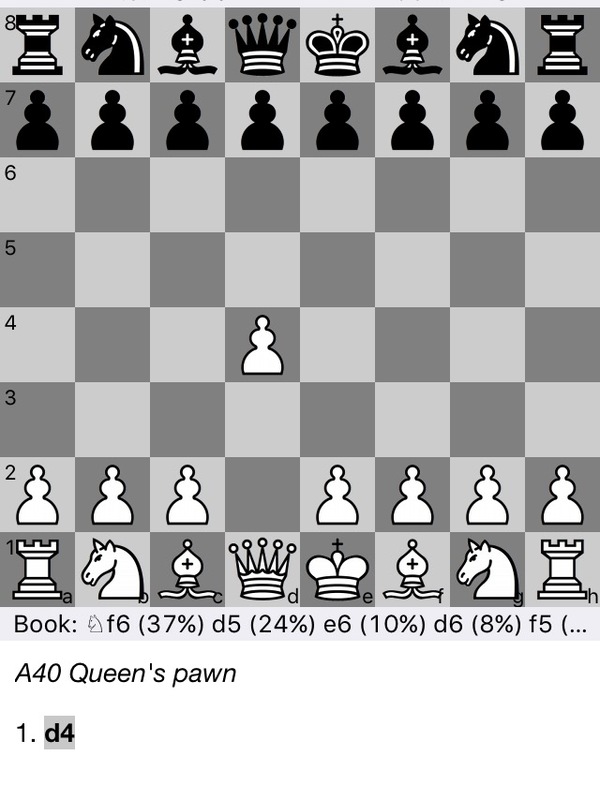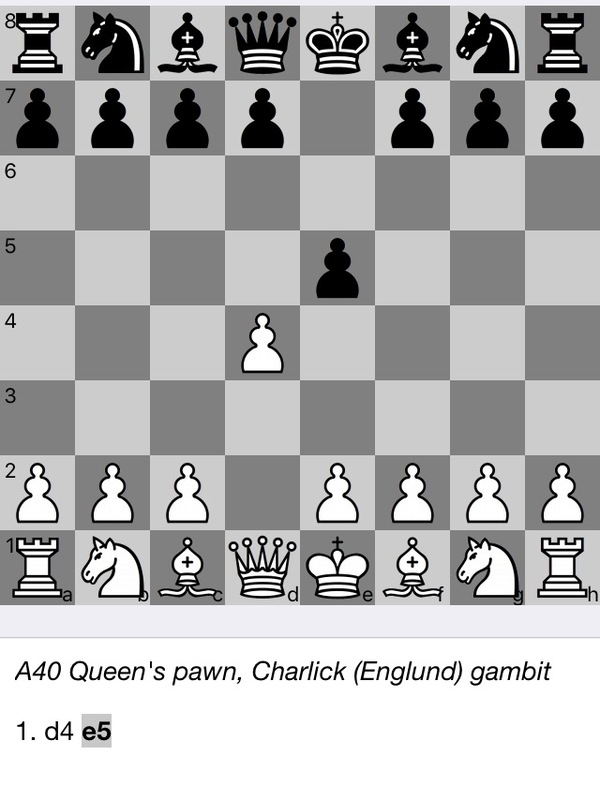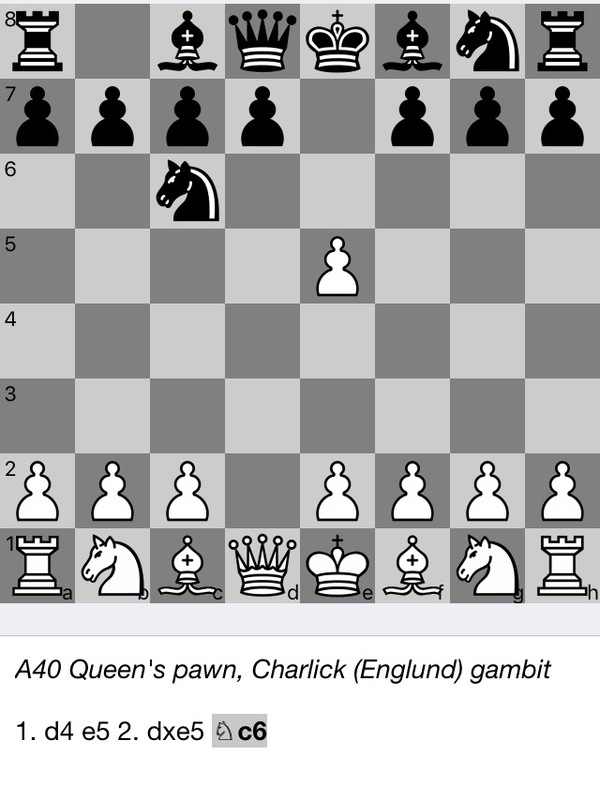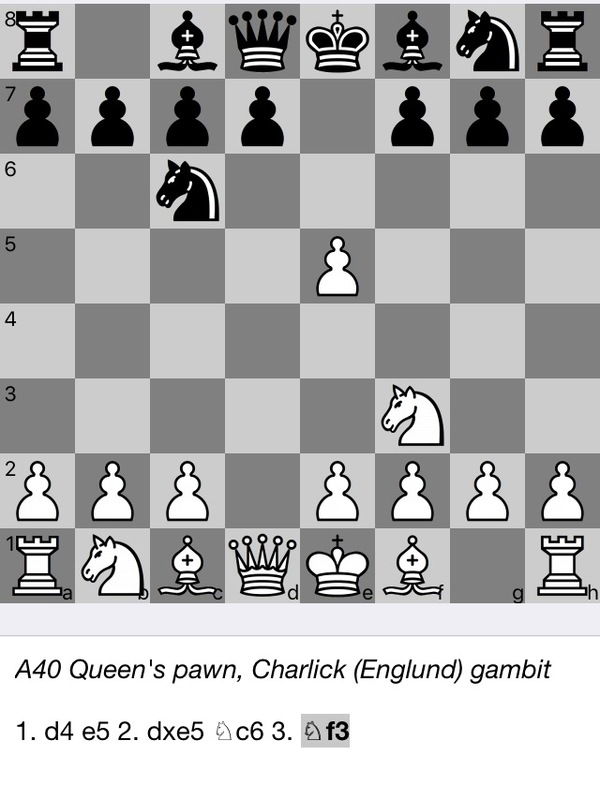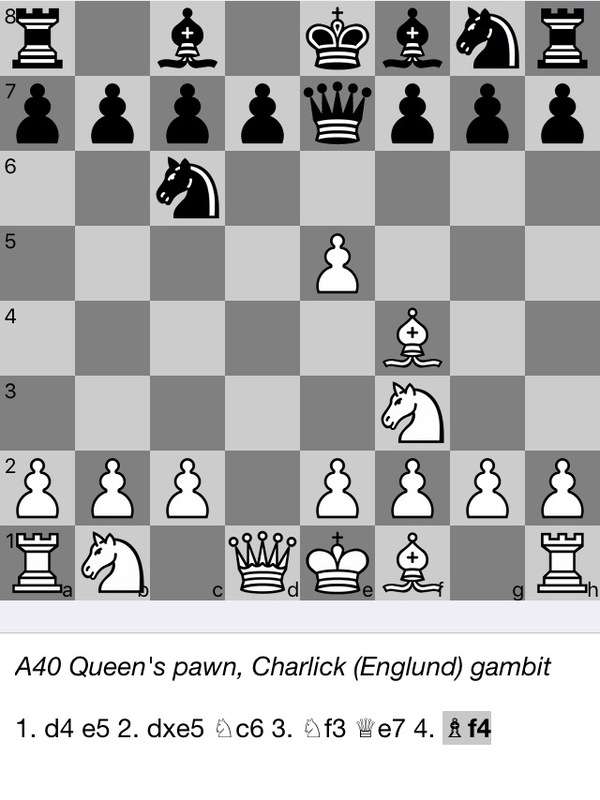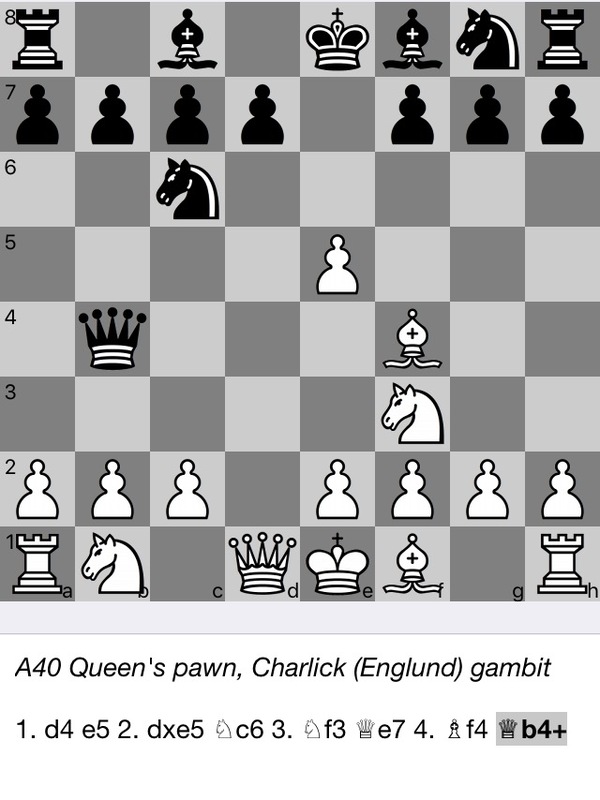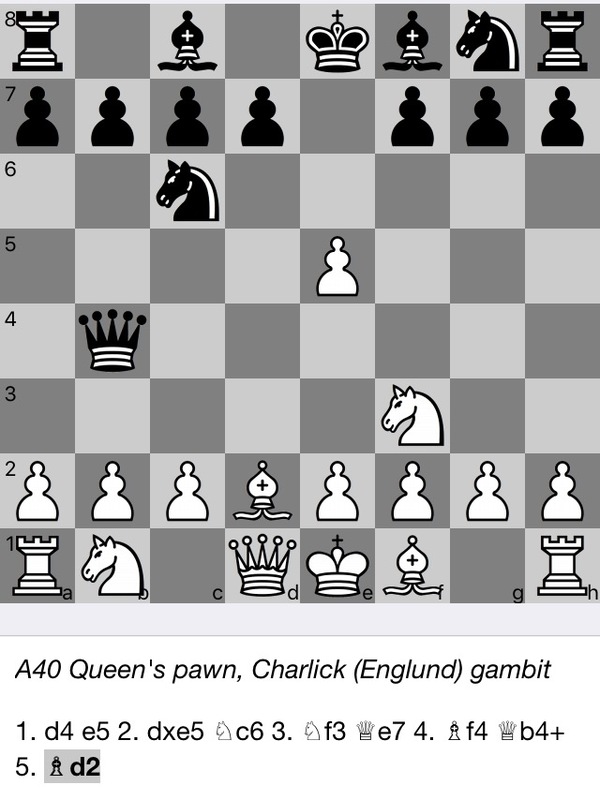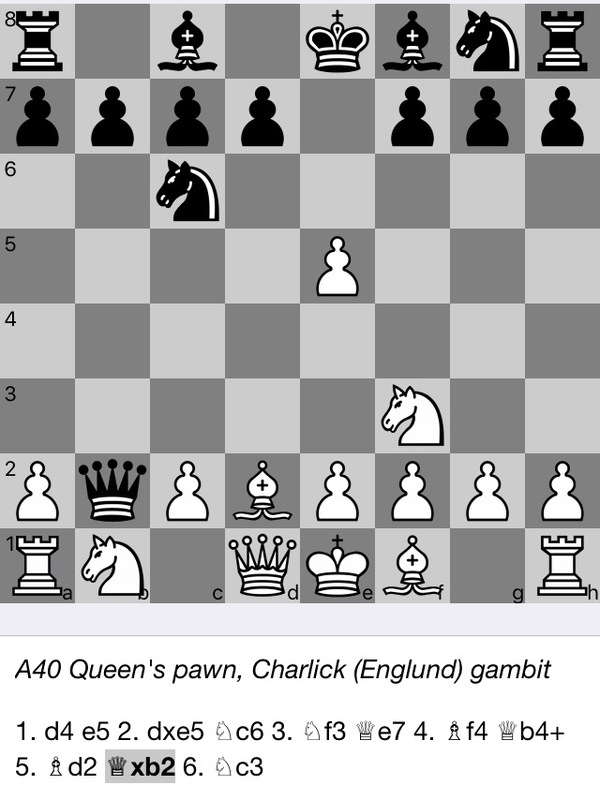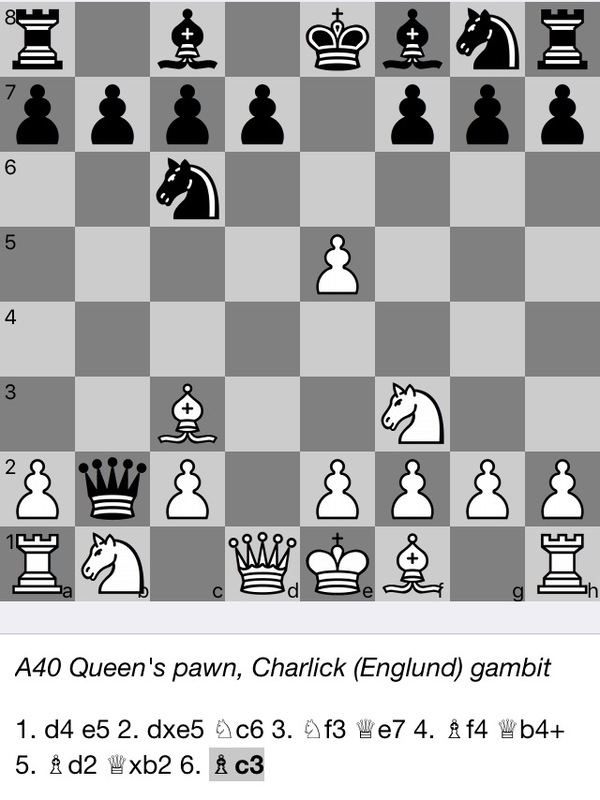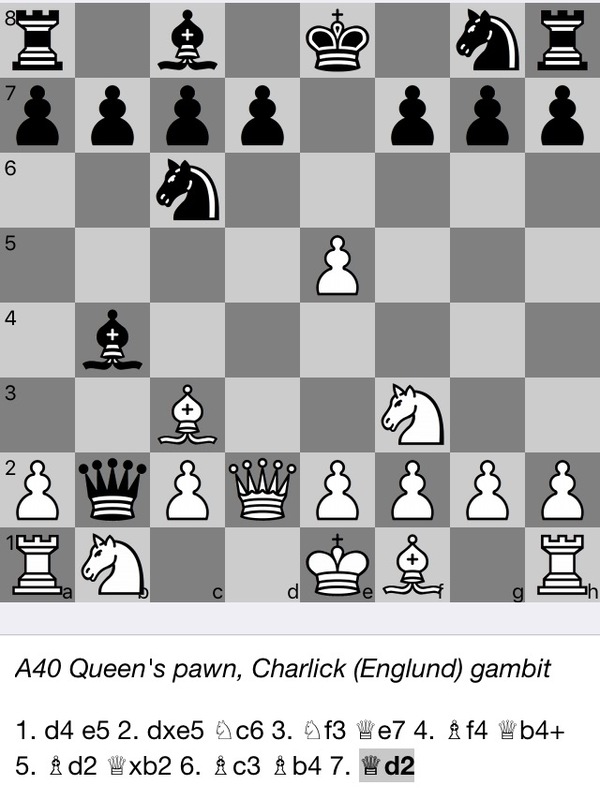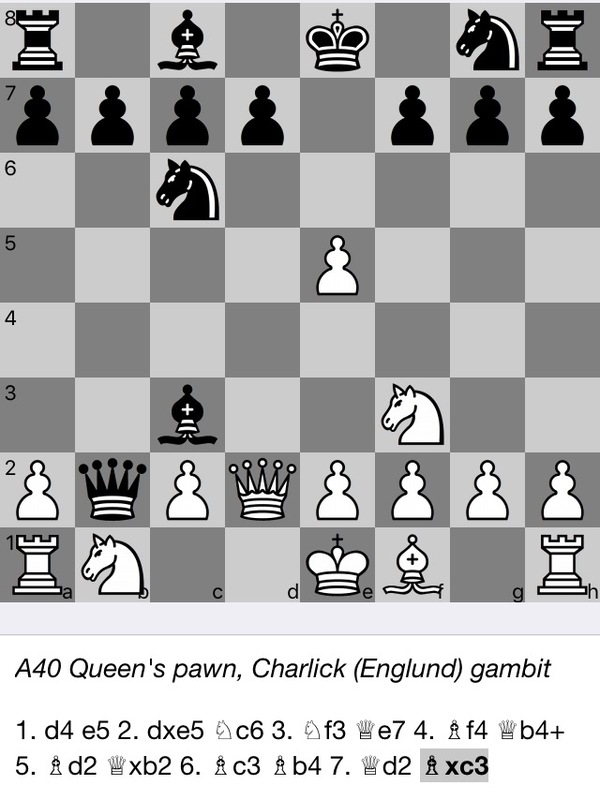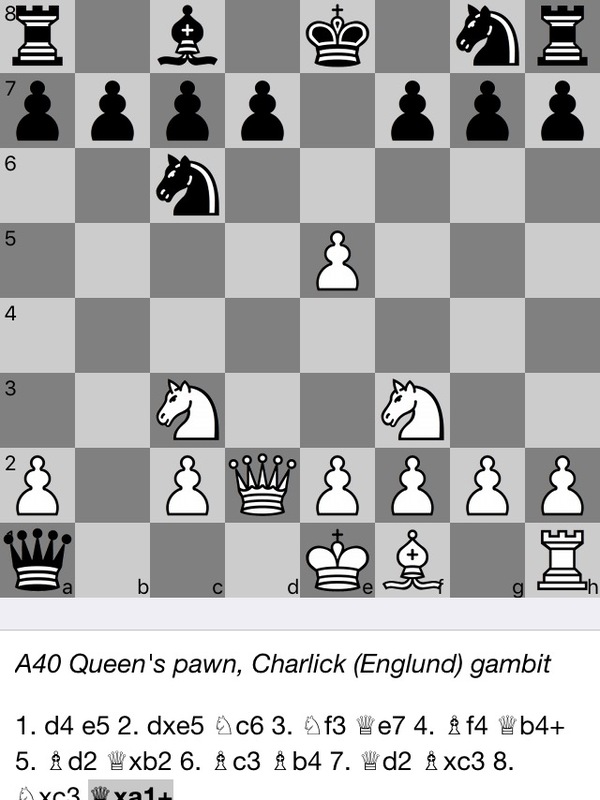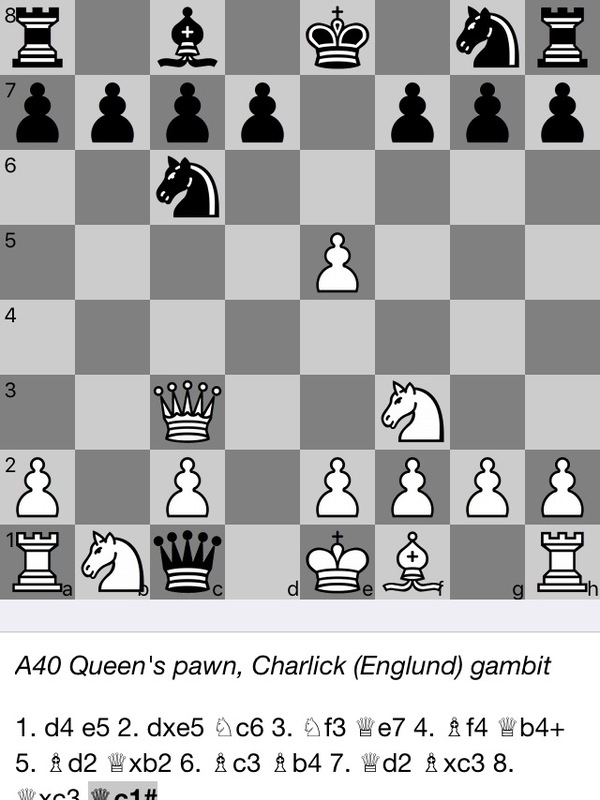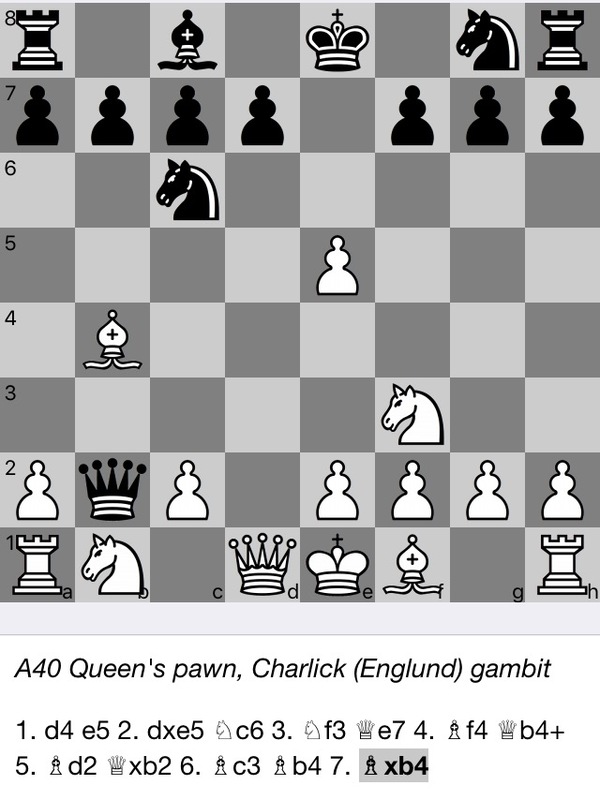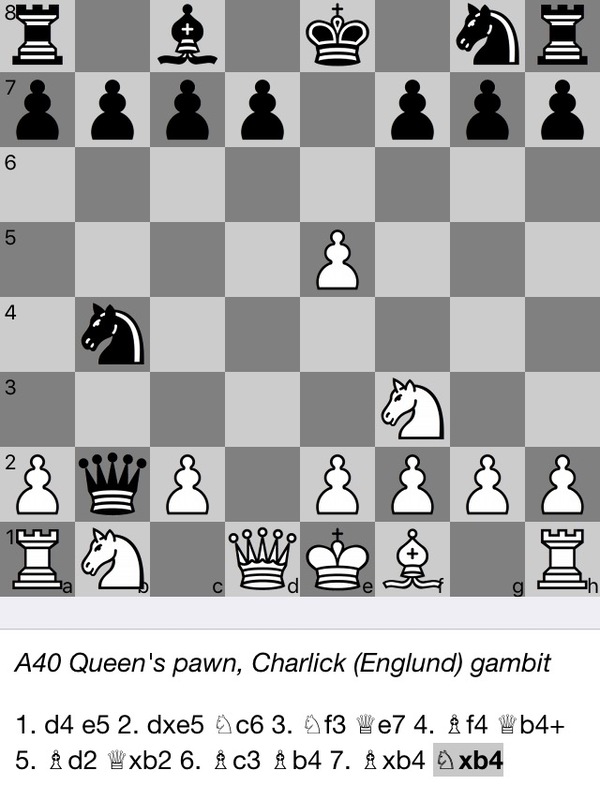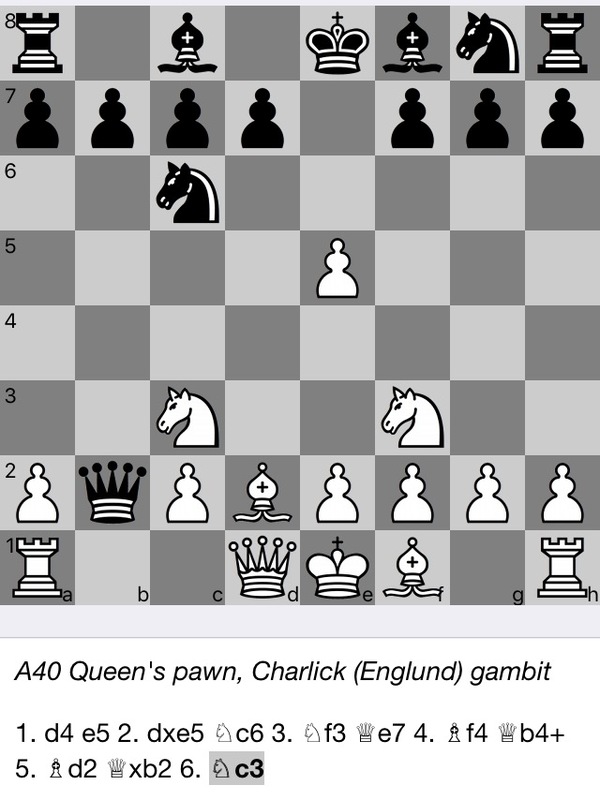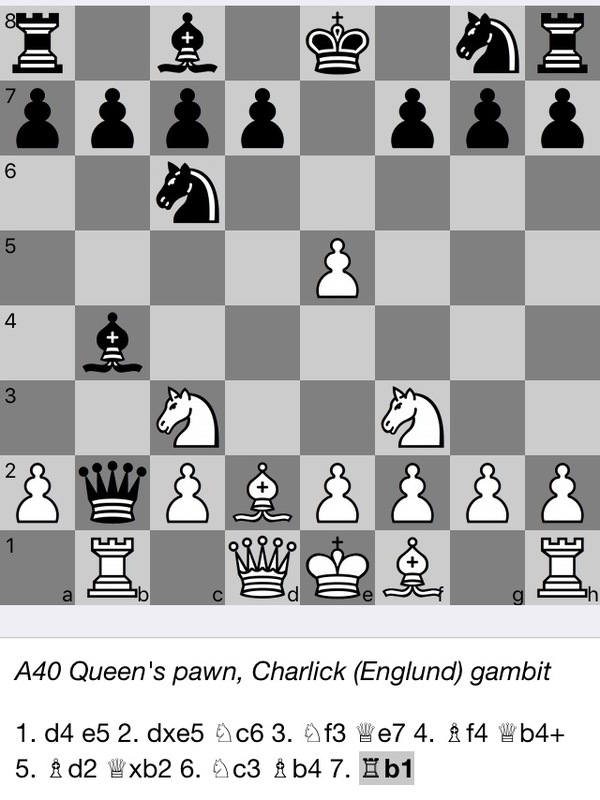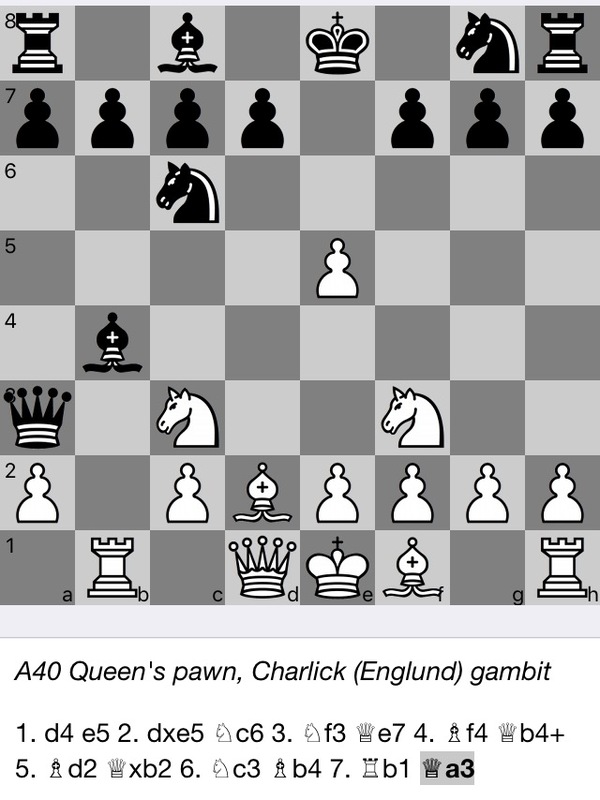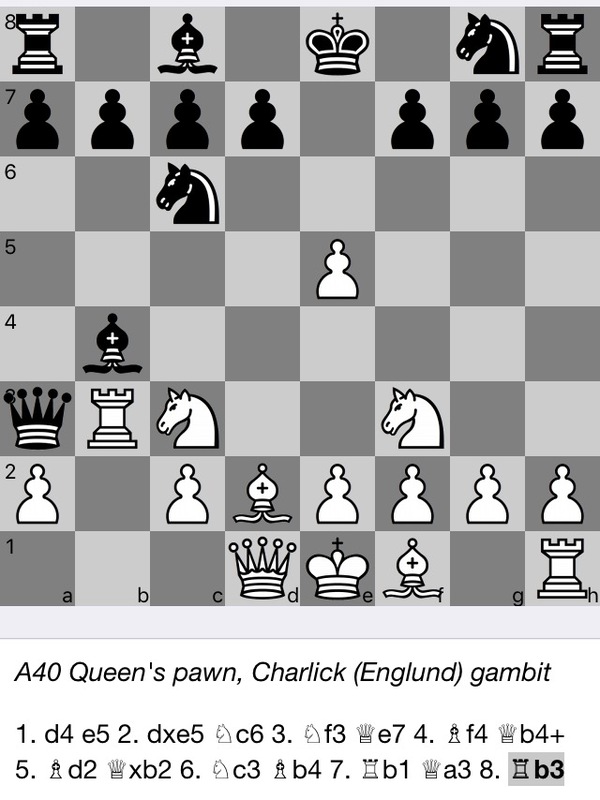Englund gambit что это
Дебютные ловушки в шахматах #2 Гамбит Энглунда
Черные жертвуют пешку
И тут же атакуют пешку белых
Шах! Под боем король и слон
Теперь рассмотрим ходы белых, ведущих в распространенную (для любительской партии или блица) ловушку.
Белые хотят защитить ладью и одновременно атаковать вражеского ферзя, но это ошибка. Черные «связывают» слона
В случае защиты ферзем
Просто забирают слона.
Теперь если взять на с3 конем, теряем ладью
А при взятии ферзем получаем мат на с1
Другое продолжение: 7. Слон бьет на b4
После конь бьет на b4 угроза черных: конь бьет на с2 очень сильна
Правильно было: 6. Конь с3. Белые готовы сыграть конь d5 и атаковать пешку с7
У белых преимущество: более гармоничное развитие
Я бы сделал картинки с доской меньше раза в полтора, но добавил бы побольше пояснений.
вместо абсолютно бестолковой защиты короля слоном на d2, ходим конем на b3. Вместо полностью отданной инициативы и проигранных фигур белые теряют пешку.
ps: да и вообще вся ситуация крайне надуманная как будто белые в поддавки играют.
pps: описанные ходы это касательно 8-ой картинки.
Филиал шахматной школы на Пикабу.
Шахматный дебют для ленивых |Каменная стена|
Этот дебют подходит для начинающих игроков. Не требует много времени на подготовку. Отличный, надежный выбор для любителя вплоть до первого разряда.
Однако совсем новичкам(менее 50 партий в шахматы за все время) я рекомендую на первых порах не применять дебюты и просто играть по трем главным принципам (см предыдущее видео)
Продолжение серии «Шахматы с нуля»
Посмотрев ролик, вы узнаете:
1) Какие цели ставит перед собой сильный шахматист в начале и середине партии.
2) Что объединяет самые популярные первые ходы в играх мастеров.
3) Почему сила одной и той же фигуры может быть оценена по разному.
4) Как добиться максимальной эффективности своих фигур.
5) На что обратить внимание при выборе дебютной стратегии.
6) Попутно мы рассмотрим тактический прием «связка» и чем он может быть опасен.
Ответ sandric в «Как я выигрываю у сильных шахматистов»
The Englund Gambit
After listening from many players about the success of black by playing it, I tried it but found one of my opponents playing this 3.f4, I didnt get what to do ahead. and got to a conclusion that black have a bad position over here. Will anyone please let me know the other possibilities after this f4 which might help black?
1. e5 is a stupid move that loses a juicy pawn for nothing, and 2. Qe7 an even more stupid one.
In any case, 3.f4 isn’t terribly bright, either (3.Nc3 and/or 3.Nf3 are enough for a crushing advantage), but nevertheless almost anything is good against 2. Qe7.
Try playing less speculatively.
Yes it is, corrected.
thanx pfren for the advice, but i found myself worst when i see white with 1.d4, can you suggest me the best opening against d4?
There are no best openings. just sound and unsound ones.
Pick a sound and simple one, and try understanding its main ideas and development schemes. No variation memorization, leave that to the pros. At your ;level, the opening plays a very minor role to your chess development.
alright, thank you! will practice!
Yes, I think if black knew white would play f4 then black might go for the Englund.
Black’s best try for any advantage with this Englund thing is 1.d4 e5 2.dxe5 Nc6 3.Nf3 Qe7 4.Bf4 Qb4+. But after 4.Qd5, black has trouble getting the pawn back, and is probably quite inferior. Maybe 4. Nb4 is a move.
White can play 4.Bg5 with a large advantage, since 4. Qb4+ 5.Nc3 Qxb2 6.Bd2 poses white only technical difficulties- objectively Black’s position is already dead lost.
Of course the same can be achieved via a different move order: 4.Bf4 Qb4+ (mentioned in the previous post) 5.Bd2 Qxb2 6.Nc3.
Can we call this miserable position «black’s best try for any advantage»?
so gambitlover says englund gambit a good opening but pfren is against it. what’s the final call? good or bad? maybe it can be decided by a match? cant it be?
1.d4 Nf6 2.c4 e5 is a LOT sounder and unrefuted
pfren says ‘ Can we call this miserable position «black’s best try for any advantage»? ‘ I said black’s best try is 4. Qb4+. I didn’t say this hokey gambit is any good. The Englund is unsound, and I tend to agree: 5.Bg5 may be even stronger than 5.Qd5. The fact remains that once black has gotten himself into this pickle, the only other possibly reasonable alternative after 4.Bf4 or 4.Bg5 is 4. f6, which looks pretty bad. I originally thought this opening was developed by Robert Englund, of Freddy Krueger fame. But it wasn’t, so it hasn’t even got that going for it.
One of the better things that can be said about this gambit is that it will surely develop your fighting skills! Also, once you change from this opening to a different one, you will only see improvement!
I don’t think there’s anything wrong with 1.f4. I think that my great score against it is solely due to selection bias.
One of the better things that can be said about this gambit is that it will surely develop your fighting skills! Also, once you change from this opening to a different one, you will only see improvement!
There must be a flaw in this logic. Why not just begin your games by spotting your opponent your e7 pawn? That’ll really sharpen up your fighting skills!

